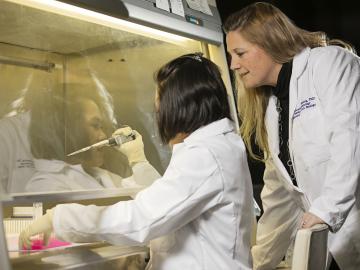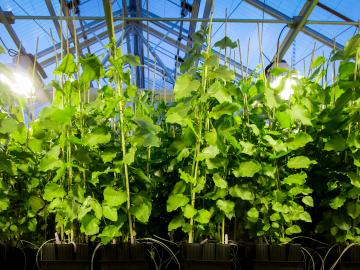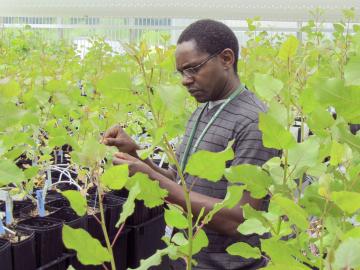Filter News
Area of Research
- (-) Biological Systems (18)
- (-) Functional Materials for Energy (16)
- (-) Fusion Energy (17)
- Advanced Manufacturing (34)
- Biology and Environment (177)
- Biology and Soft Matter (5)
- Building Technologies (12)
- Chemical and Engineering Materials (4)
- Chemistry and Physics at Interfaces (11)
- Clean Energy (522)
- Climate and Environmental Systems (14)
- Computational Biology (6)
- Computational Chemistry (5)
- Computational Engineering (5)
- Computer Science (19)
- Data (1)
- Earth Sciences (1)
- Electricity and Smart Grid (3)
- Energy Frontier Research Centers (14)
- Energy Sciences (5)
- Fossil Energy (3)
- Fuel Cycle Science and Technology (3)
- Fusion and Fission (54)
- Geographic Information Science and Technology (3)
- Isotope Development and Production (3)
- Isotopes (35)
- Materials (433)
- Materials Characterization (2)
- Materials for Computing (36)
- Materials Synthesis from Atoms to Systems (13)
- Materials Under Extremes (12)
- Mathematics (1)
- National Security (79)
- Neutron Data Analysis and Visualization (4)
- Neutron Science (190)
- Nuclear Science and Technology (74)
- Nuclear Systems Modeling, Simulation and Validation (3)
- Nuclear Systems Technology (1)
- Quantum Condensed Matter (4)
- Quantum information Science (9)
- Reactor Technology (1)
- Renewable Energy (4)
- Sensors and Controls (5)
- Supercomputing (311)
- Transportation Systems (11)
News Topics
- 3-D Printing/Advanced Manufacturing (1)
- Advanced Reactors (7)
- Artificial Intelligence (1)
- Bioenergy (2)
- Biomedical (1)
- Buildings (1)
- Computer Science (2)
- Decarbonization (1)
- Energy Storage (2)
- Environment (1)
- Frontier (2)
- Fusion (13)
- Grid (1)
- High-Performance Computing (1)
- Machine Learning (1)
- Materials (3)
- Materials Science (3)
- Nuclear Energy (10)
- Simulation (1)
- Summit (1)
- Sustainable Energy (3)
Media Contacts



Brian Davison, a researcher at the Department of Energy's Oak Ridge National Laboratory, has been awarded a 2017 fellowship by the Society for Industrial Microbiology and Biotechnology (SIMB).

Researchers at the Department of Energy’s Oak Ridge National Laboratory (ORNL) have released the largest-ever single nucleotide polymorphism (SNP) dataset of genetic variations in poplar trees, information useful to plant scientists

GreenWood Resources has licensed an Oak Ridge National Laboratory technology based on the discovery of a gene in poplar (Populus trichocarpa) that makes it easier to convert poplar trees into biofuels. GreenWood, a global timberland investment and asset m...

When it’s up and running, the ITER fusion reactor will be very big and very hot, with more than 800 cubic meters of hydrogen plasma reaching 170 million degrees centigrade. The systems that fuel and control it, on the other hand, will be small and very cold. Pellets of frozen gas will be shot int...



From the bluebird painting propped against her office wall and the deer she mentions seeing outside her office window, Linda Lewis might be mistaken for a wildlife biologist at first glance. But rather than trailing animal tracks, Lewis, a researcher at the Department of Energy’s Oak Ridge National Laboratory, is more interested in marks left behind by humans.

With more than 30 patents, James Klett is no stranger to success, but perhaps the Oak Ridge National Laboratory researcher’s most noteworthy achievement didn’t start out so hot – or so it seemed at the time.




